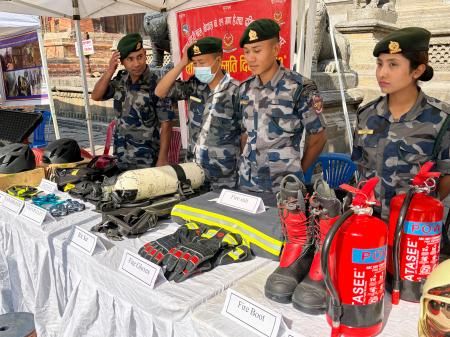Nepal's Earthquake: Remembering and Rebuilding – A Decade of Resilience
Ten years after the devastating 2015 Nepal earthquake, the nation continues its journey of remembrance and rebuilding. The 7.8 magnitude earthquake, which struck on April 25th, followed by a powerful aftershock, left an indelible mark on the country, claiming thousands of lives and causing widespread destruction. This article explores the impact of the disaster, the progress made in recovery, and the ongoing challenges Nepal faces in its path to resilience.
The Scars of 2015: A Nation in Crisis
The 2015 Nepal earthquake was a catastrophic event, leaving a trail of devastation across the country. The immediate aftermath was chaotic, with widespread loss of life, collapsed infrastructure, and a humanitarian crisis of immense proportions.
- Human Cost: The earthquake claimed over 9,000 lives and injured over 22,000, leaving countless families shattered.
- Infrastructure Damage: Historic temples, ancient cities like Kathmandu, and vital infrastructure like roads and hospitals were reduced to rubble. The impact on tourism, a vital sector of the Nepalese economy, was catastrophic.
- Economic Fallout: The earthquake dealt a severe blow to Nepal's economy, causing billions of dollars in damage and disrupting livelihoods.
The International Response: A Global Effort
The international community responded swiftly with aid, expertise, and financial support. Numerous organizations, governments, and individuals contributed to relief efforts, providing essential supplies, medical assistance, and reconstruction support. This global solidarity played a crucial role in the initial survival and recovery phases. However, the long-term challenges proved more complex than initially anticipated.
Rebuilding Nepal: Progress and Persistent Challenges
A decade later, Nepal has made significant progress in rebuilding. Many damaged structures have been repaired or replaced, and substantial efforts have been made in disaster preparedness and risk reduction.
- Reconstruction Efforts: The government, along with international partners, implemented large-scale reconstruction projects, focusing on housing, schools, and healthcare facilities. However, bureaucratic hurdles and logistical challenges hampered progress in certain areas.
- Economic Recovery: The tourism sector has slowly begun to recover, although it remains vulnerable to future shocks. Efforts to diversify the economy and promote sustainable development are underway.
- Disaster Preparedness: Nepal has invested in improving its disaster preparedness and response mechanisms, including early warning systems and community-based disaster risk reduction initiatives.
Ongoing Challenges: The Road Ahead
Despite significant progress, Nepal still faces many challenges in its long-term recovery.
- Funding Gaps: Securing adequate and sustainable funding for reconstruction remains a major hurdle. Many projects are still incomplete due to financial constraints.
- Seismic Vulnerability: Much of Nepal's infrastructure remains vulnerable to future earthquakes. Building codes and enforcement need to be strengthened to ensure greater resilience.
- Social and Psychological Impacts: The earthquake's psychological impact on survivors continues, requiring ongoing support and mental health services. Addressing the long-term social and economic consequences of displacement and trauma remains vital.
Remembering and Honoring the Victims
Remembering the victims of the 2015 earthquake is crucial in ensuring that lessons learned are not forgotten. Commemorative events and initiatives continue to honor their memory and underscore the importance of resilience and preparedness. The spirit of the Nepalese people, their tenacity in the face of adversity, and the ongoing global support are testament to the strength of the human spirit and the power of collective action.
Conclusion: A Future Built on Resilience
Nepal's journey of remembrance and rebuilding is a testament to the nation's resilience. While significant progress has been made, the path to full recovery remains long and challenging. Continued international cooperation, strengthened national infrastructure, and investment in disaster preparedness are crucial to building a more resilient and prosperous future for Nepal. Learning from the past is essential to mitigating risks and building a safer, more sustainable nation.
Further Reading:
This article aims to provide accurate and up-to-date information. Please note that information may change, and consulting additional resources is recommended.
